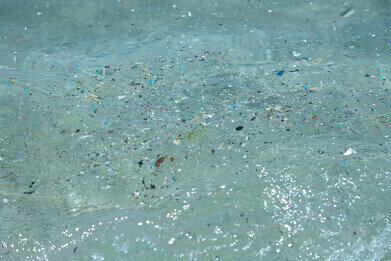GC-MS
Analysing for Microplastics in Water Using Pyrolysis
Nov 08 2023
The pervasive issue of microplastic pollution in our oceans and waterways has garnered significant attention in recent years, raising concerns about its potential impact on ecosystems and human health. To address this environmental challenge, scientists and researchers have been exploring various methods to detect and quantify microplastics in water samples. One such technique that has gained prominence is pyrolysis, a thermal decomposition process that can effectively break down microplastics for analysis.
Pyrolysis involves subjecting a sample to high temperatures in the absence of oxygen, causing the material to decompose into its constituent parts. When applied to microplastics, this process breaks down the polymers, releasing volatile organic compounds (VOCs) and other byproducts. These byproducts can then be analysed using various analytical techniques, such as gas chromatography-mass spectrometry (GC-MS), to identify and quantify the types and amounts of microplastics present in a water sample.
One of the key advantages of using pyrolysis for microplastic analysis is its ability to differentiate between different types of microplastics based on their chemical composition. Traditional methods, such as visual identification and spectroscopy, can struggle to distinguish microplastics from natural particles like plankton or sediment. Pyrolysis, on the other hand, offers a more precise and reliable means of characterising microplastics, providing valuable information about the source and potential hazards associated with these particles.
Furthermore, pyrolysis can be applied to a wide range of sample matrices, including seawater, freshwater, and even wastewater. This versatility makes it a valuable tool for researchers studying microplastic pollution in various aquatic environments. It can also be adapted for use in monitoring programs, allowing for regular assessments of microplastic contamination in different water sources over time.
However, there are some challenges associated with pyrolysis-based microplastic analysis. One major hurdle is the need for specialised equipment and expertise, as pyrolysis instruments can be complex and expensive. Additionally, sample preparation and handling require careful attention to prevent contamination and ensure accurate results.
In conclusion, pyrolysis is a powerful technique for analysing microplastics in water samples. Its ability to break down microplastics and provide detailed chemical information makes it a valuable tool for researchers and environmental agencies striving to understand and combat microplastic pollution.
More information online
Events
Apr 22 2025 Kintex, South Korea
Analytica Anacon India & IndiaLabExpo
Apr 23 2025 Mumbai, India
Apr 27 2025 Portland, OR, USA
May 11 2025 Vienna, Austria
May 18 2025 Tempe. AZ, USA














